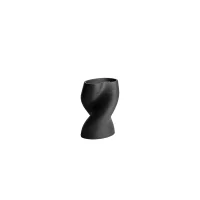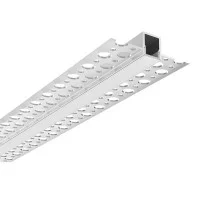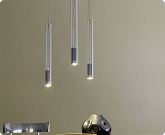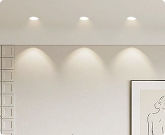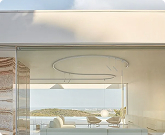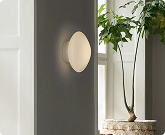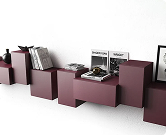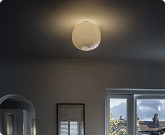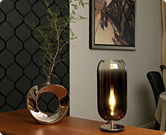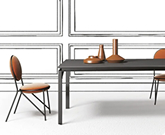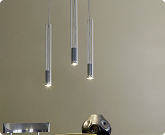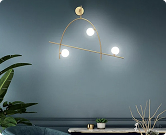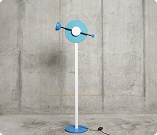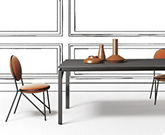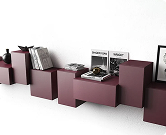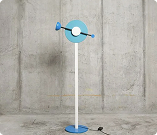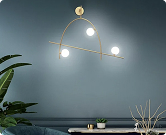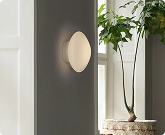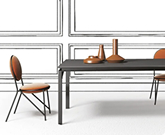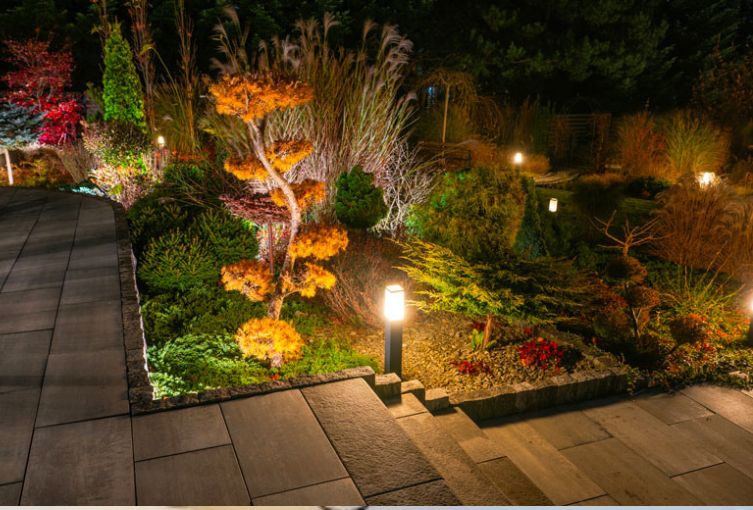IP Protection Rating: What It Means and Why It Matters
When choosing lights for your garden, terrace, or any outdoor space, one of the most important aspects to consider is the IP rating. You may have heard of them, perhaps reading "IP44" or "IP65" on a lamp packaging, but not everyone knows what these codes really mean.
Yet understanding them can make the difference between a successful purchase and one that forces you to replace everything after the first rain, but don't worry, because in this article we'll explain everything.
Find out all the outdoor lighting on our Diffusione Luce website!
What is the IP rating?
IP stands for Ingress Protection, or protection against the ingress of solid objects and liquids. The IP rating is an international classification (IEC 60529 standard) that indicates how resistant a device is to the penetration of external elements such as dust, sand, humidity, and water.
The code consists of two numbers: the first represents the protection against solid objects (such as dust), while the second indicates the protection against liquids (usually water). The higher the number, the greater the protection offered. For example, a device with an IP65 rating will be much more protected than one with an IP44 rating.
Why the IP rating is crucial for outdoor lights
Installing an outdoor lighting system means exposing the lights to rain, humidity, wind, dust, and, in many cases, even insects. This is why the IP rating becomes a crucial factor to evaluate. It's not just about durability or aesthetics, but also safety.
An inadequately protected light fixture can deteriorate rapidly or, worse, cause electrical problems. When choosing outdoor lights, you should always check the IP rating indicated by the manufacturer. This allows you to determine whether a specific light fixture can be installed, for example, on a covered porch, in the garden, or even by the pool.
What IP rating should outdoor lights have?
There's no single right rating for all situations, but in general, for outdoor lighting, you should choose fixtures with at least IP44, especially if they're installed in partially protected areas.
However, if you need to place them in areas that are completely exposed or subject to splashes of water (such as near fountains, paths, or pergolas), it's best to opt for an IP65 rating or higher. The choice depends largely on the exposure and the function of the light. A recessed spotlight, for example, will require more protection than a ceiling light under a canopy.
Is IP44 suitable for outdoor use?
One of the most common questions concerns the IP44 rating. This rating indicates that the device is protected against solid objects greater than 1 mm and against splashing water from all directions. It is therefore suitable for outdoor environments, but only if sheltered: for example, under a porch, a canopy, or a shelter.
It is not recommended to install IP44 lamps in areas completely exposed to the elements, as heavy or prolonged rain could damage them or stop working.
Is IP54 rainproof?
A fixture with an IP54 rating is already a good compromise for outdoor use. This means it is protected against dust (though not completely sealed) and against splashing water from all directions. In practice, it can withstand moderate rain, but not direct water jets or prolonged exposure. If you live in an area that gets a lot of rain or is prone to severe thunderstorms, you may want to upgrade to a higher rating.
Difference between IP44 and IP65
The difference between IP44 and IP65 is significant and lies in the second digit of the code. While IP44 offers protection only against splashes, IP65 protects against low-pressure water jets from any direction. This means that an IP65 light is completely resistant to heavy rain, dust, and moisture.
If you're looking for a reliable solution for your garden, driveway, or open terrace, IP65 is the ideal choice. It can be installed without worries even in areas exposed to the elements.
What about IP20?
You may also come across fixtures with an IP20 rating, often among the cheapest on the market. This rating indicates that the light is minimally protected against solid objects larger than 12 mm, but has no protection against liquids.
Simply put, IP20 is completely unsuitable for outdoor use because it cannot withstand humidity or rain, even under a roof. It's perfect for indoor lighting, such as living rooms, bedrooms, or hallways, but should be avoided in humid environments like bathrooms, kitchens, or garages. If you're considering using a lamp with this rating in outdoor or semi-outdoor environments, it's best to avoid it.
IP Protection Rating Table
To help you better understand the meaning of the different ratings, here's a summary table of the most common IP protection ratings:
| IP RATING | PROTECTION AGAINST SOLIDS | PROTECTION AGAINST LIQUIDS |
| IP20 | no protection | no protection |
| IP44 | 1 mm (es. insects) | water splash |
| IP54 | limited dust | water splash |
| IP65 | completely dustproof | water jets |
| IP66 | completely dustproof | powerful water jets |
| IP67 | completely dustproof | temporary immersion |
| IP68 | completely dustproof | on going immersion |
This table provides a quick reference for choosing the most suitable IP rating for the environment in which you'll install your lighting.
In conclusion, you'll have understood that knowing and understanding the IP rating is essential for choosing the right outdoor lighting. It's not just a technical detail: it's a guarantee of safety, durability, and peace of mind.
Whether you're looking for recessed spotlights, wall lamps, or decorative lights for your garden, checking the IP rating will help you avoid unpleasant surprises and invest in products truly suitable for outdoor use. And now that you have all the tools to interpret it, you can make a more informed and confident choice.
Find out all the outdoor lighting on our Diffusione Luce website!
Written by Alice Pruccoli
Share this content


